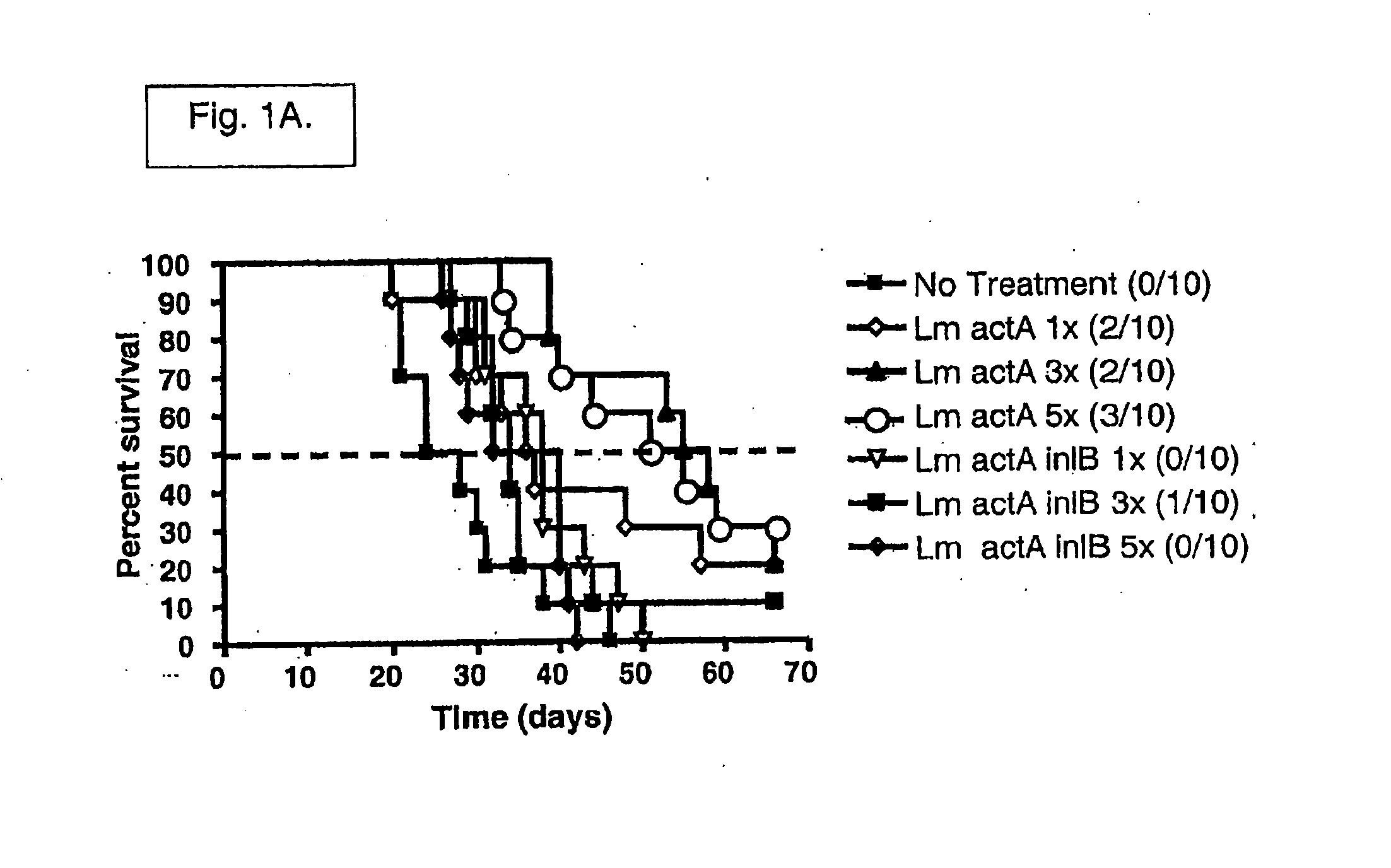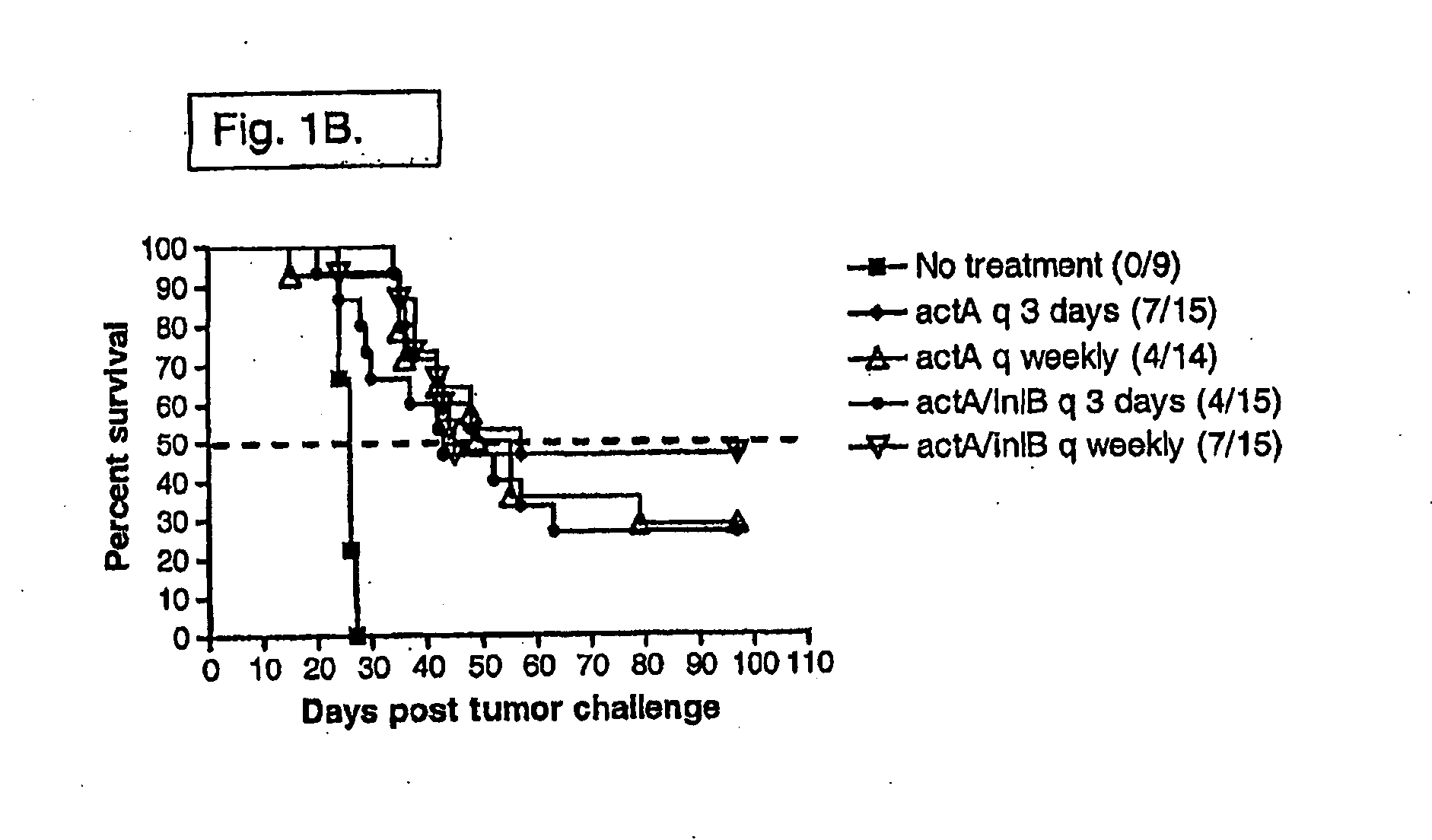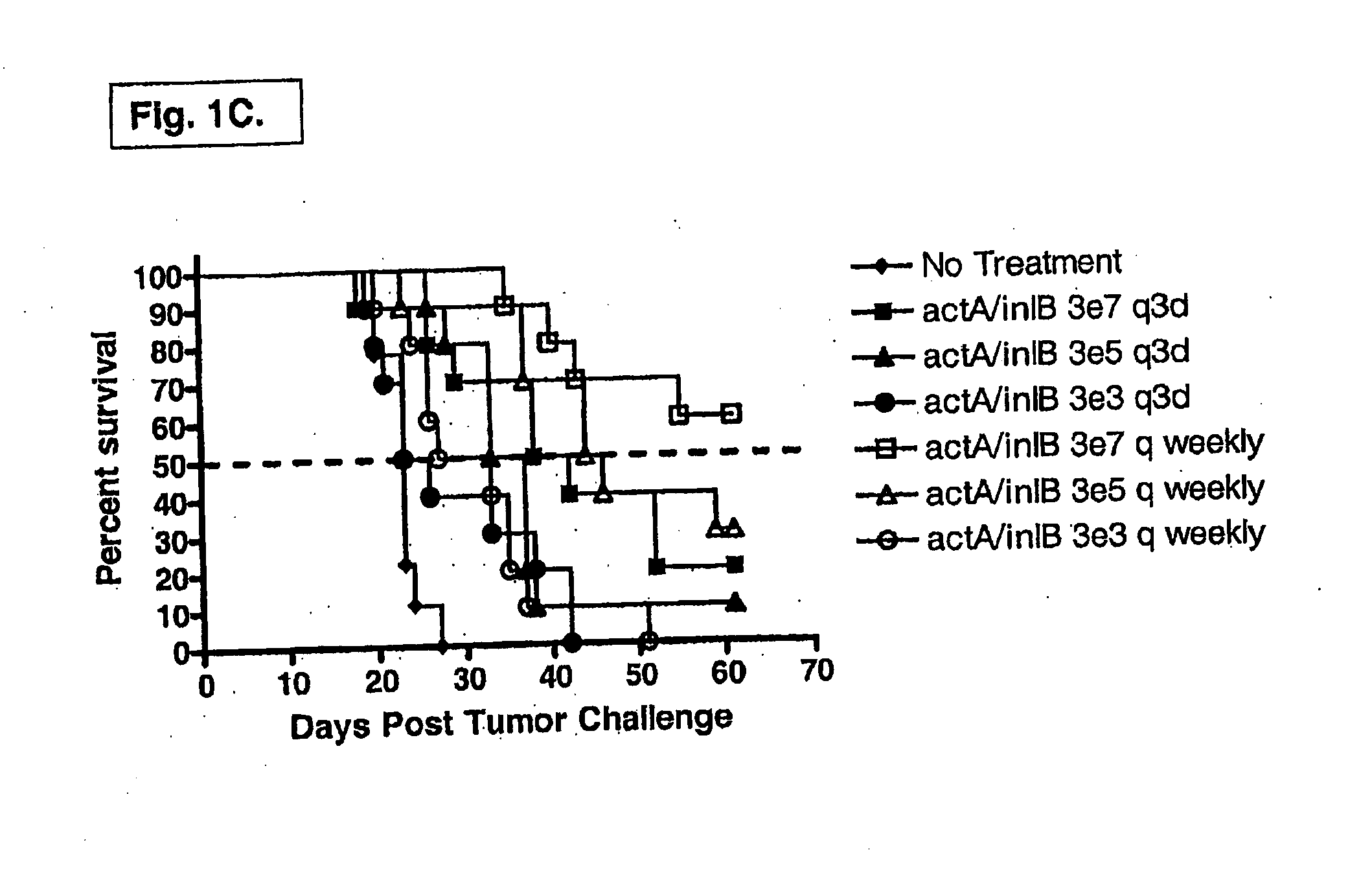[0040] In some embodiments, the invention provides a method for treating a mammal having a cancerous or non-listerial infectious condition, wherein the cancerous or infection condition is in the liver of the mammal, wherein the method comprises administering to the mammal an effective amount of a metabolically active, attenuated Listeria, wherein the Listeria does not comprise a nucleic acid encoding a non-listerial antigen capable of stimulating a specific immune response against the condition, and wherein the attenuated Listeria is administered to the mammal in multiple doses. In some embodiments, the mammal has the cancerous condition (e.g., a condition comprising a tumor and/or cancer). In some embodiments, the mammal has the non-listerial infectious condition (e.g., a condition comprising an infection). The invention encompasses methods of treatment in which the cancerous or infectious condition is inhibited or reduced in the mammal by the administration of the effective amount of the attenuated Listeria. The invention further encompasses methods of treatment in which the survival of the mammal is enhanced by the administration of the effective amount of the attenuated Listeria. In some embodiments, the attenuated Listeria is attenuated in one or more of growth, cell to cell spread, binding to or entry into a host cell, replication, or DNA repair. In some embodiments, the Listeria is attenuated by one or more of an actA mutation, an inlB mutation, a uvrA mutation, a uvrB mutation, a uvrC mutation, a nucleic acid targeting compound, or a uvrAB mutation and a nucleic acid targeting compound. In some embodiments, the Listeria cannot do one or more of form colonies, replicate, or divide. In some embodiments, the attenuated Listeria is administered intravenously. In some embodiments, the attenuated Listeria is administered in three or more doses. In some embodiments, the attenuated Listeria is not administered orally to the mammal, is not administered as a composition that is at least 99% free of other types of bacteria, is administered to the mammal in a pharmaceutical composition, and/or is not naturally occurring. In some embodiments, the mammal has not previously been administered a vaccine against the cancerous or infectious condition. In some embodiments, the method does not further comprise administering an additional vaccine against the cancerous or infectious condition to the mammal. The administering of the Listeria may stimulate an innate immune response and/or an acquired immune response. In some embodiments, the mammal is human. In some embodiments, the Listeria is Listeria monocytogenes. In some embodiments, the effective amount comprises at least about 1×103 CFU/kg or at least about 1×103 Listeria cells/kg.
[0041] The invention further provides a method for inducing an immune response against a cancer cell, tumor, or non-listerial infective agent in a mammal (e.g., human), wherein the mammal comprises the cancer cell, tumor, or non-listerial infective agent in its liver, wherein the method comprises administering to the mammal an effective amount of a metabolically active, attenuated Listeria, wherein the Listeria does not comprise a nucleic acid encoding a non-listerial antigen capable of stimulating a specific immune response against the condition, wherein the attenuated Listeria is administered to the mammal in multiple doses. In some embodiments, the Listeria is not administered orally to the mammal, is administered as a composition that is at least 99% free of other types of bacteria, is administered in a pharmaceutical composition, and/or is not a non-naturally occurring strain. In some embodiments, the attenuated Listeria is attenuated in one or more of growth, cell to cell spread, binding to or entry into a host cell, replication, or DNA repair. In some embodiments, the Listeria is attenuated by one or more of an actA mutation, an inlB mutation, a uvrA mutation, a uvrB mutation, a uvrC mutation, a nucleic acid targeting compound, or a uvrAB mutation and a nucleic acid targeting compound. In some embodiments, the Listeria cannot form colonies, replicate, and/or divide. In some embodiments, the attenuated Listeria is administered intravenously. In some embodiments, the attenuated Listeria is administered in three or more doses. The administering of the Listeria may stimulate an innate immune response and/or an acquired immune response. In some embodiments, the Listeria are a strain of Listeria monocytogenes. In some embodiments, the effective amount comprises at least about 1×103 CFU/kg or at least about 1×103 Listeria cells/kg. In some embodiments, the method does not further comprise administering an additional vaccine capable of stimulating a specific immune response against the cancer cell, tumor, or non-listerial infective agent to the mammal. In some embodiments the mammal compri
 Login to View More
Login to View More 


